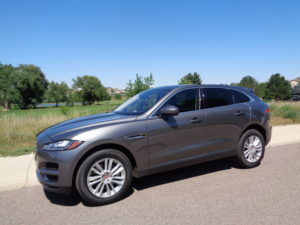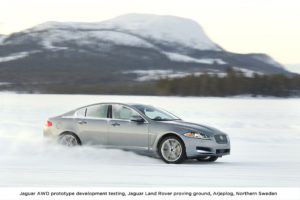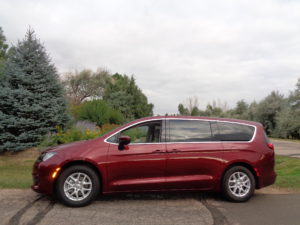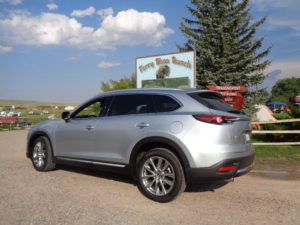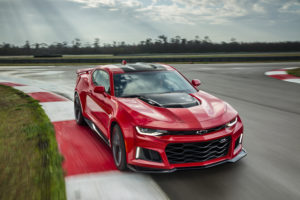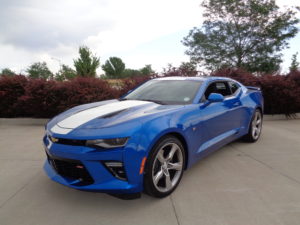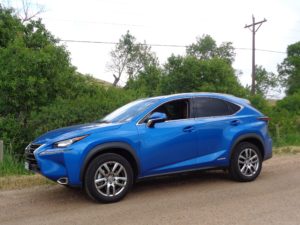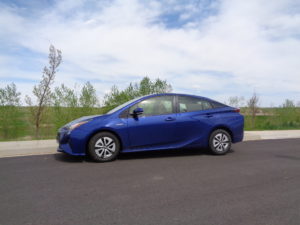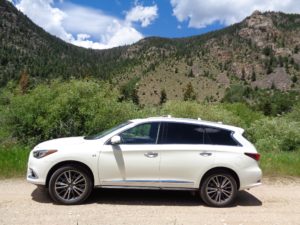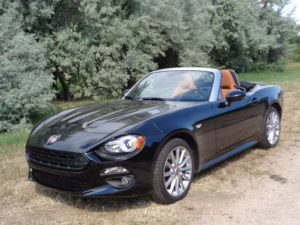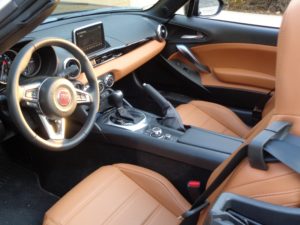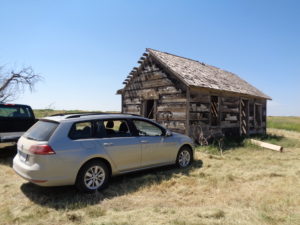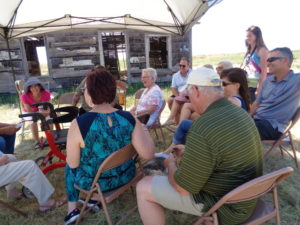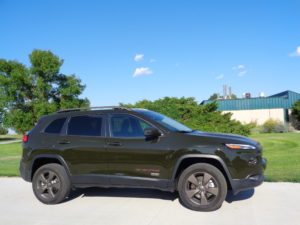
The olive drab shade of green on the outside drew most comments as I spent some time recently in the 2016 Jeep Cherokee Latitude 4X4.
As observers drew close and reacted to the badge on the side, “1941, 75 Years,” many, at least of the older generation, got it – the 75th anniversary of Jeep, born in the early days of World War II.
Though today’s Wrangler is a more recognizable descendant of the first Jeeps, the Cherokee in that color scheme stirs the memories and respect for the iconic four-wheeler. Jeep calls the color recon green.
Jeeps, whether Wrangler or Cherokee or Grand Cherokee, are the hottest-selling vehicles on the U.S. market today. Jeep this month has passed the 500,000 mark in U.S. sales for the year thus far.
Besides the green finish and 1941 badging, adding distinction to the new Cherokee I drove were bronze-painted aluminum wheels, 75th edition cloth/mesh bucket seats and orange interior accents.
The Cherokee, which returned to the Jeep lineup in 2014, is compact in size, measuring 182 inches in overall length, on a wheelbase of 106 inches.
The Cherokee rides fairly comfortably and is a very capable offroader, with performance from a 271-horsepower, 3.2-liter V-6 engine and 9-speed automatic transmission.
Jan and I added 240 miles to the Jeep one afternoon when we delivered a Ford Flex to Jim and Cristi Powell in Yuma; Jim’s a professional photographer and the Flex and its spacious cargo area fill his needs.
The drive helped lift the Cherokee’s overall fuel mileage to 25 miles per gallon; its EPA estimate is 19/26. The Jeep isn’t particularly powerful on acceleration. If you want power, get a Grand Cherokee SRT.
The 9-speed tranny and V-6 power (base engine is a 2.4-liter, 4-cylinder), along with the 75th anniversary niceties, raised sticker price on the Cherokee to $36,765. Also included are panoramic sunroof, backup camera, stop/start system, remote start, power liftgate, heated front seats and heated steering wheel. It rides on Continental ProContact 255/60R18 tires.
Following is a brief timeline for Jeep’s 75 years:
1941 – Willys-Overland awarded first contract from Army for 16,000 units of little reconnaissance car.
1941 – U.S. enters World War II after Dec. 7 attack of Pearl Harbor.
1945 – World War II ends; Willys produced 368,000 Jeeps and Ford 277,000.
1947 – Jeep pickups go on sale in ¾-ton and 1-ton size.
1953 – Kaiser Manufacturing buys Willys-Overland.
1954 – Willys introduces the CJ-5, one of the most popular Jeeps ever.
1960 – Jeep CJ models get a competitor, the Scout from International Harvester.
1965 – Ford shows off the Bronco SUV, another competitor to the Jeep.
1969 – American Motors buys Kaiser-Jeep.
1972 – Quadra-Trac full-time 4WD is unveiled by Jeep; each wheel can operate at its own speed.
1976 – The CJ-7 replaces the CJ-6 for Jeep in North America.
1977 – Four-door version of Jeep Cherokee introduced.
1978 – Jeep Wagoneer Limited becomes first domestic SUV with leather interior.
1987 – Chrysler Corp. purchases American Motors (AMC) from Renault; the prize was Jeep.
1992 – Grand Wagoneer production ends after 30 years.
2001 – Production begins on Jeep Liberty, which became successor to the original Cherokee.
2006 – Carlike Patriot and Compass are introduced.
2007 – Four-door Wrangler Unlimited goes on sale; in recent years has attained some of highest resale values in U.S. market.
2012 – Production ends for the Liberty; which was succeeded by the resurrected Cherokee name.
2014 – Jeep tops 1 million units annually in global sales for the first time.
2015 – Production rolls along in Italy of the new subcompact Renegade, of which I wrote, “It’s Italian-built with an all-American name and a nose like a Chinese pug.”
